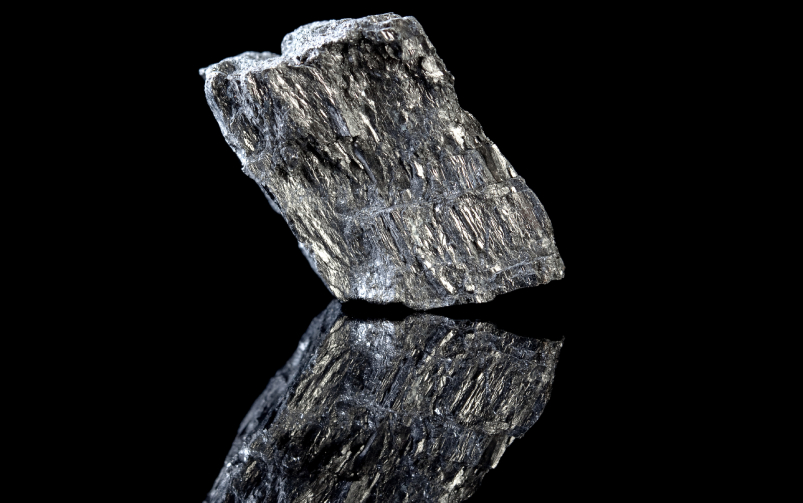One of 140 solvent extraction cells that will be at the core of the rare earth processing facility’s separation unit. Courtesy of the Saskatchewan Research Council.
The Saskatchewan Research Council (SRC) has designed and manufactured Canada’s first proprietary commercial-scale solvent extraction cell technology, which is designed to upgrade rare earth element (REE) concentrate to a commercial rare earth oxide. The organization called it a step forward in the development of its rare earth processing facility in Saskatoon.
The facility, which, through two stages of processing, will produce rare earth oxides and magnet metals from REE ores, will be the first of its kind in North America, making Canada one of only a handful of countries in the world with this capability.
A total of 140 solvent extraction cells will be manufactured in-house at an SRC-operated facility by fall 2024 for use in the processing facility’s separation unit.
The separation unit will be fed mixed rare earth chloride, a liquid mixture containing all 17 REEs, to extract individual or grouped rare earth oxides.
The first batch of 50 cells are anticipated to be completed by fall 2023, according to Mike Crabtree, SRC’s CEO and president. The solvent extraction cells are manufactured with automation algorithms that will improve productivity and efficiency, while being cost-effective, the company stated. Crabtree said the separation stage is AI-controlled, which is “really unique in the world.”
“From an operational standpoint, it means that rather than taking weeks, and sometimes months, for the system to equilibrate, it will take hours and days,” he explained. “That will have a huge cost-saving impact.”
Finding cost-saving options was crucial for the SRC, as it needed to compensate for the sizeable investments it made in the sustainability aspect of the facility, Crabtree said. Currently, the rare earth processing facility will cost around $87 million to build. So far, $20 million has been invested to ensure all water and chemical waste will be recycled and reused. “There will be zero liquid discharge from this plant,” added Crabtree.
The facility has been designed to process about 3,000 tonnes of monazite concentrate into 1,600 tonnes of REEs annually, of which 400 tonnes will be a neodymium praseodymium (NdPr) alloy. The facility will also produce REEs that can be used in the defence industry.
“We’re calling this a research demonstration and commercialization plant,” Crabtree said. “A full-scale plant might be 10,000 tonnes.”
Even at a third of the scale of a full-size plant, Crabtree said 400 tonnes of NdPr alloy is enough to provide material for half a million electric vehicles.
The midstream facility will be sourcing monazite mainly from Brazil, but SRC is looking at Europe, Africa and Southeast Asia as other sources of monazite. Currently, there are no commercially operating rare earths mining projects in Canada for either monazite or bastnaesite, two major minerals used to produce rare earth metals.
“We took the opportunity to build that midstream ahead of the upstream mining sector,” Crabtree said. “It’s a little like that chicken and the egg story; which do you do first? Do you put the mines in place, or the ability to process the ore? We’ve chosen the ability to process so that when Canadian mines come online, they will have a route to market for their product, other than just selling the ore on the international market.”
The SRC also hopes to stimulate a rare earth supply chain in Canada. “If our only ambition is to mine the rare earths, we might make $10,000 a tonne exporting to the rest of the world,” he continued. “If we take it through the midstream process, the value goes up exponentially. For example, NdPr alloys can range from about $90,000 to $200,000 a tonne.”
The over 100,000-square-foot facility is aimed to position Saskatchewan as a North American option for the processing of REEs sourced from around the world. Anywhere between 30 and 50 jobs are expected to be created by the facility once it is up-and-running by the end of this year.
Crabtree said representatives from over 40 countries have visited the facility in the last six months.
“We have received incredible interest both domestically within Saskatchewan and Canada, and globally,” he added. “We are in detailed discussions with a significant number of companies at the moment about both the provision of various raw materials to the plant, but also for offtake of the products.”
Although the facility is still in development, the potential for expansion is already being considered for the next two to three years. Crabtree explained expansion could be handled on two fronts, increasing the capacity to a full-commercial level of 12,000 tonnes of monazite processed annually and extending the midstream further down to start producing magnets.
“This is the beginning of a really, really important sector for the Canadian economy,” said Crabtree.




